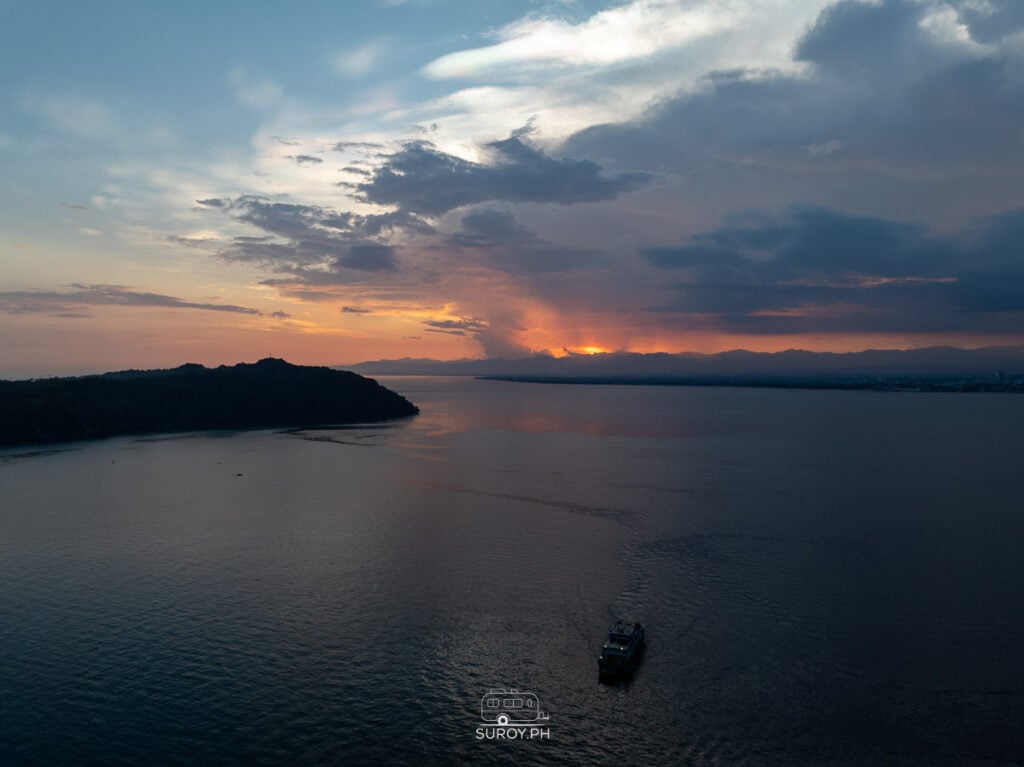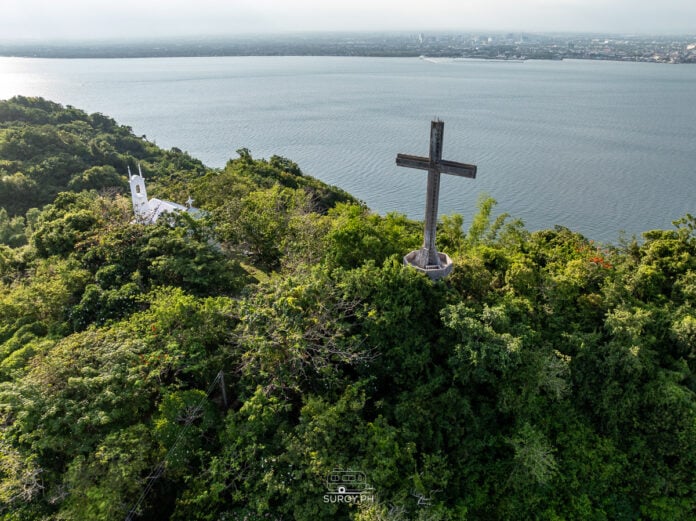Guimaras Island, located just off the coast of Iloilo in Western Visayas, is a paradise known for its pristine beaches, heritage landmarks, hilltop views, and the sweetest mangoes in the world. As one of the Philippines’ most underrated destinations, Guimaras offers a peaceful retreat for those who want to experience nature, history, and culture without the crowds.
This comprehensive travel guide will walk you through how to get there, what to see, where to stay, and what makes Guimaras truly special.
How to Get to Guimaras
The most common entry point is via Iloilo City:
- From Iloilo City, take a pump boat or ferry from Ortiz Wharf to Jordan Wharf in Guimaras. Travel time is approximately 15 minutes.
- Fare ranges from ₱15 to ₱20 per passenger.
- There’s a tourism assistance desk at Jordan Wharf where you can register and book accredited guides or tricycle tours.
Note: Guimaras enforces a strict ordinance prohibiting the entry of outside mangoes to preserve its mango industry. You’ll see signs upon arrival reminding visitors not to bring any mango fruit or seedlings into the island.



Top Tourist Spots in Guimaras
1. Tatlong Pulo Beach
For those craving the quiet rhythm of island life, Tatlong Pulo in Jordan, Guimaras is a dreamlike escape. The name means “three islets” — referring to the trio of limestone rock formations rising dramatically from the clear turquoise waters just off the shore. These rugged formations and the surrounding coves create a surreal, postcard-perfect backdrop that feels untouched and utterly tranquil.
Unlike the more crowded beaches on the mainland, Tatlong Pulo remains peaceful and relatively undeveloped. There are no large resorts here — just nipa huts, native cottages, and the soft lull of waves against the rocks. It’s the kind of place where time slows down, perfect for swimming, snorkeling, picnicking, and simply unplugging from the world.
Adventurous souls can kayak around the rock formations or explore the short coastal trails, while photographers will love capturing the shadows and silhouettes the islets cast at sunrise and sunset. If you’re looking for a slice of serenity with a touch of the wild, Tatlong Pulo is where Guimaras reveals one of its best-kept secrets.
The beach features:
- Crystal-clear waters for swimming and snorkeling
- Nipa huts perched on the rocks, offering rustic accommodation or day rentals
- A natural lagoon between the rocks, perfect for kayaking or cliff-jumping
Tatlong Pulo is ideal for travelers seeking off-the-beaten-path adventures.



2. Guisi Lighthouse and Ruins
Step into history at the Guisi Lighthouse (Faro de Punta Luzaran), the second-oldest lighthouse in the Philippines, built in the 1890s during the Spanish colonial period. Perched on a cliff in Nueva Valencia, the rusted skeletal remains of the original iron lighthouse stand beside a more modern structure, offering visitors a striking contrast between past and present.
The surrounding Guisi ruins were once part of a Spanish outpost designed to guide mariners safely through the Panay Gulf. Today, moss-covered stone walls and panoramic views of the turquoise sea make this a popular stop for history lovers and photography enthusiasts alike.
What to see:
- The skeletal remains of the original metal lighthouse
- The newer functioning lighthouse standing nearby
- A panoramic view of the coastline from the hilltop
- The surrounding ruins of Spanish-era buildings overgrown with vines and moss
The lighthouse is a favorite among history buffs and photographers.




3. San Lorenzo Wind Farm
Towering above the gentle hills of San Lorenzo, a row of 27 massive wind turbines slices through the sky — harnessing the power of the sea breeze to fuel a more sustainable future. The San Lorenzo Wind Farm is more than just an engineering marvel; it’s a symbol of Guimaras’ commitment to clean energy and responsible tourism.
Visitors to the wind farm are welcomed with wide, open views of the island’s agricultural landscape, the coastlines in the distance, and the rhythmic turning of the blades — each one standing over 40 meters tall. It’s an incredible photo opportunity and an inspiring stop for those curious about renewable energy.
The best time to visit is during golden hour, when the setting sun casts long shadows across the fields and paints the turbines in warm hues. There are also shaded huts nearby where you can rest and take in the breeze, and the road leading up to the windmills offers a scenic drive or motorcycle ride through rural Guimaras.
Whether you’re an eco-enthusiast, a cyclist on the island loop, or a traveler chasing unique views, the San Lorenzo Wind Farm is a must-see — proof that beauty and sustainability can rise side by side.
Features:
- Wide-open countryside views
- Great photo opportunities with the towering turbines
- Peaceful ambiance perfect for biking or slow drives
The site is especially beautiful during sunset.

4. Trappist Monastery and Gift Shop
A visit to Guimaras wouldn’t be complete without a peaceful stop at the Our Lady of the Philippines Trappist Monastery — the only Trappist monastery in the country. Run by Cistercian monks, this sacred space is open to visitors seeking reflection, prayer, or simply a quiet break from their journey.
Just outside the monastery is their well-known Trappist Gift Shop, where you can buy monk-made treats like mango jam, mango bars, pineapple juice, and other local delicacies. These make perfect pasalubong that reflect Guimaras’ rich agricultural roots and spiritual warmth.
What to buy:
- Mango bars and jams
- Local biscuits, dried mangoes, and snacks
- Handmade religious items and keychains
Visitors are welcome to explore the grounds and offer prayers in the small chapel.


5. Sinukuan Hilltop View
Tucked away in the highlands of Buenavista, Sinukuan Hilltop View in the highlands of Bala-an Bukid in Buenavista is more than just a scenic viewpoint — it’s a powerful blend of nature, faith, and folklore. From its summit, you’re treated to sweeping views of Guimaras’ rolling hills, coastal plains, and on a clear day, even the bustling skyline of Iloilo Cityacross the strait. But what truly makes this spot stand out is the giant white cross and hilltop church that grace its peak — a beacon of both spiritual devotion and island identity.
Visible even from the shores of Iloilo, the Sinukuan Cross has become one of Guimaras’ most recognizable landmarks. Pilgrims and visitors alike make the uphill journey to not only take in the views but to offer prayers at the modest yet serene chapel atop the hill. The site has grown in popularity as a Holy Week destination, with many locals climbing the hill for sunrise services and quiet reflection.
But beyond its spiritual draw, Sinukuan Hill is wrapped in mystery. Locals speak of a guardian spirit — a diwata named Maria Sinukuan — who is believed to protect the forests and lands surrounding the hill. Though Maria Sinukuan is more famously associated with Mount Arayat in Pampanga, the legend has been adopted in Guimaras, giving rise to tales of sudden fogs, whispered warnings, and supernatural encounters. She is said to watch over the hill, blessing those who respect nature and punishing those who exploit it.
At the summit, as the sun casts its golden light over the church, cross, and surrounding mountains, it’s easy to understand why this place holds such meaning for both believers and dreamers. Whether you’re here for reflection, adventure, or simply to witness the sea of clouds and landscapes below, Sinukuan Hilltop View offers a moment of stillness — and a connection to something deeper.
Things to experience:
- A quiet trek or tricycle ride to the hilltop
- A spiritual stop for reflection
- A 360-degree view of forested hills and ocean on clear days
It’s a peaceful, lesser-known attraction ideal for sunrise or golden hour visits.


Paraw Regatta Festival: When the Sea Becomes a Canvas
Although the Paraw Regatta Festival takes place in neighboring Iloilo, it also celebrates the waters between Iloilo and Guimaras — the very strait where the paraws race. These vibrant double-outrigger sailboats, adorned with hand-painted sails, glide past Guimaras’ coastlines in one of Asia’s oldest traditional sailing events.
If you’re lucky enough to be in Guimaras during the festival season in February, you can witness part of the spectacle from the island’s shores. It’s a celebration of seafaring heritage, artistry, and the enduring connection between Guimaras and the sea.
Read more about the Paraw Regatta Festival
Manggahan Festival: A Celebration of Mangoes and Culture
Held every May, the Manggahan Festival is Guimaras’ grandest event celebrating the island’s mango harvest. It’s a vibrant showcase of Guimarasnon culture, agriculture, and pride.
Festival highlights:
- Mango Eat-All-You-Can booths for a fixed fee
- Trade fairs and food stalls
- Cultural parades and street dances
- Concerts, fireworks displays, and nightly entertainment
The festival draws tourists and locals alike, turning the usually quiet island into a buzzing, colorful celebration.

Where to Stay in Guimaras
- Nature’s Eye Resort – Private and nature-focused with ocean-view cottages
- Raymen Beach Resort – Located in Alubihod, with easy access to beach and tours
- Jannah Glycel Beach House – Clean, family-friendly, and near Jordan town

Travel Tips for Guimaras
- Bring cash as ATMs are limited on the island.
- Charter a tricycle for a day tour (~₱1,200–₱1,500 for 2–3 people).
- Respect local customs, especially when visiting religious sites.

Nearby Attractions
- Iloilo City – Just a boat ride away, explore heritage houses and street food
- Miagao Church – A UNESCO World Heritage Site south of Iloilo
- Garin Farm – A religious and wellness farm in San Joaquin
- Molo Church – One of the most beautiful churches in Iloilo
Final Thoughts
Guimaras is a destination that blends natural beauty, cultural richness, and small-island charm. From the quiet solitude of Tatlong Pulo to the historic remnants of Guisi Lighthouse and the lively Manggahan Festival, every corner of the island tells a story. It’s a place where life is simpler, the mangoes are sweeter, and the smiles are warmer.
In Guimaras, you won’t find big crowds or bustling cities—but you will find serenity, sincerity, and soul. Whether you come for the mangoes, the sunsets, or the sense of stillness, you’ll leave with something far sweeter: a deep connection to a place that stays with you long after you’ve gone.
If you’re looking for an unspoiled escape in the Visayas, Guimaras Island awaits.
Suroy ta sa Guimaras.
Looking for your next suroy? We’ve got you. Visit suroy.ph and follow our journey on Facebook, Instagram, and TikTok as we chase hidden gems across the Philippines.
Tag us with #SuroyPH and #DiscoveryPH and let’s inspire others to explore more.

